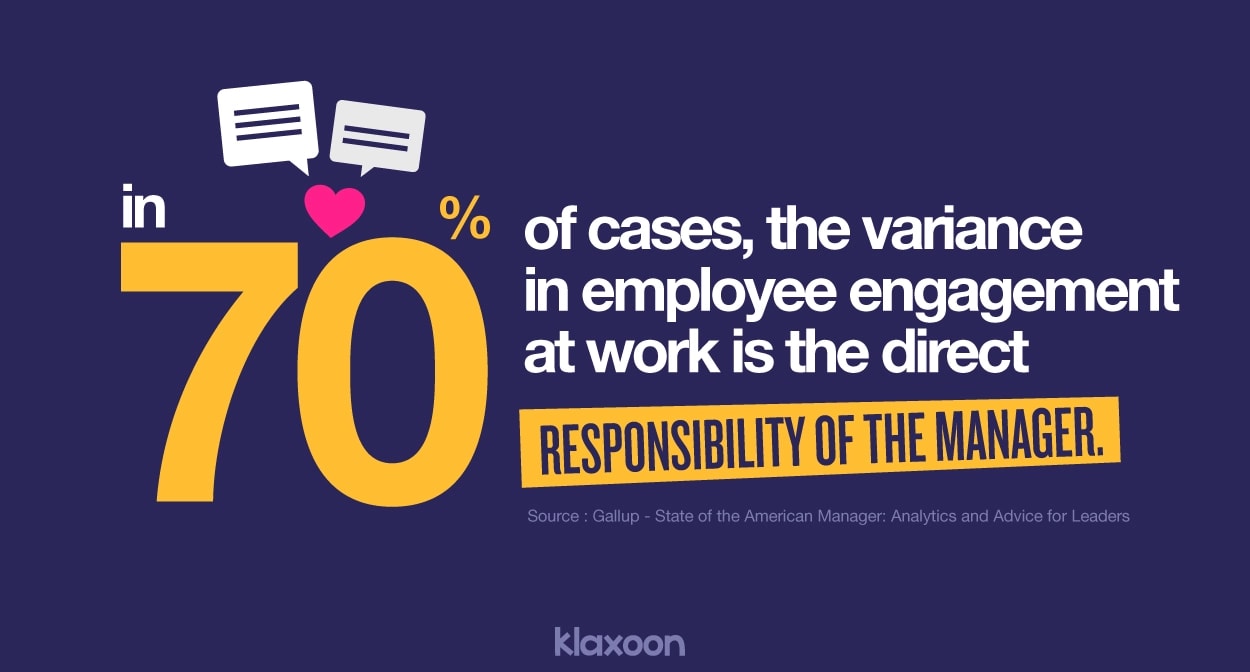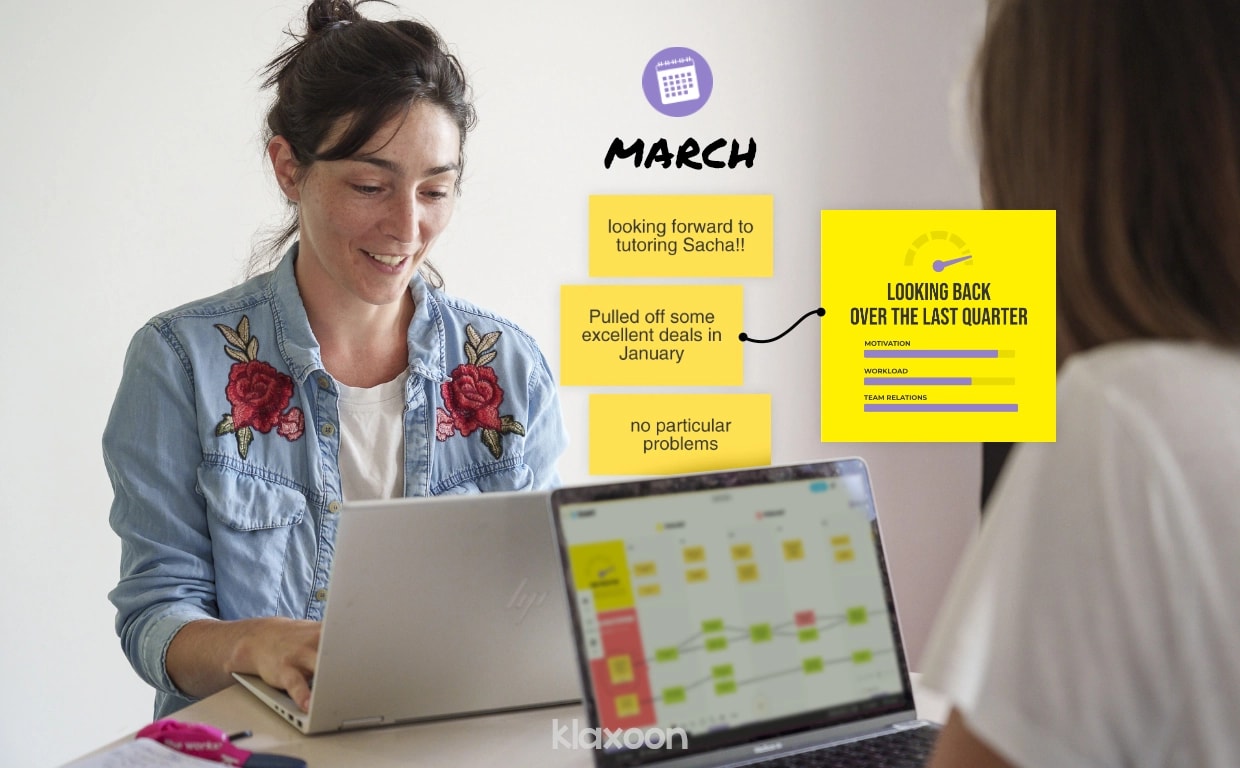4 tips from Pr. Rogelberg to improve employee engagement with one-on-one meetings
Published on February 14, 2025
4 tips from Pr. Rogelberg to improve employee engagement with one-on-one meetings
Keeping employees engaged at work is essential to get teams working more efficiently, and the entire company running smoothly. Steven Rogelberg, a Professor of Organizational Science at the University of North Carolina, has been studying this for a long time. For him, one of the solutions lies in organizing regular one-on-ones between managers and employees. And he even has some tips to pass on.
7,800 billion dollars. According to Gallup's State of Global Workplace: 2022 Report this is how much employee disengagement costs companies. A crazy amount, almost impossible to imagine. But, the message is clear: employees all over the world feel some form of disengagement at work. The causes are numerous and well-known: lack of meaning or stress at work are just a few of them. But how to deal with this? There are various solutions, such as changing the way we work together, starting with paying more attention to how you can improve employee engagement through efficient one-on-one meetings.
Gallup's report is adamant about this. The relationship between managers and their staff contributes greatly to employee engagement throughout an organization. As the report illustrates only too well, while the manager is responsible for giving the direction, it’s the employees who actually work to achieve the goals. So you have to treat them well, let them express their point of view, let their creativity run wild. In short, make sure they have the best working conditions.


In 70% of cases, the variance in employee engagement at work is the direct responsibility of the manager. Gallup - State of the American Manager: Analytics and Advice for Leaders
For 70% of employees surveyed by Gallup, the manager’s role is paramount in their own work engagement. This figure shows how important it is to have a balanced working relationship, consisting of discussions and mutual trust to get the most out of this talent.
To maintain a good relationship between managers and employees and thus improve engagement, one-on-one meetings are a must.
According to Steven Rogelberg, Chancellor’s Professor and a Professor of Organizational Sciences at the University of North Carolina (USA) and author of the best seller The Surprising Science of Meetings, having great one-on-ones regularly with their manager is a key factor in employee engagement.
This is one of the findings of the study conducted by Professor Rogelberg in partnership with Klaxoon. For the survey, 2,685 people were interviewed in four countries (Germany, the United States, France and the United Kingdom). Respondents are employees in the tertiary sector who have to attend at least three meetings per week.
To improve employee engagement, one-on-one meetings are essential. As long as they are effective. The figures say it all.


Average survey response rate based on whether people said they were not very engaged or very engaged in meetings in general.
The left column represents respondents who said they were not very engaged at work, the right column represents those who felt very engaged. While the number of one-on-ones varies slightly (around four), the difference in their effectiveness is obvious. For 66% of engaged employees, one-on-ones are effective compared to only 47% for those who are not very engaged. Similarly, 50% of one-on-ones are considered stressful for people who are not very engaged, with a much lower figure for those who feel engaged on the other hand.
The survey conducted by Steven Rogelberg in partnership with Klaxoon identified four ways of making one-one-ones more effective.


For effective one-on-one meetings, think about their frequency, their structure and how you communicate.
Weekly, biweekly, monthly, quarterly? How often should you have your one-on-one? Unfortunately, there’s no easy answer. While generally accepted good practice is to hold them regularly, the "right" frequency varies from one person to another. According to Steven Rogelberg, this is the most divisive aspect of one-on-ones. "Some respondents wanted fewer or no meetings with their manager (unless necessary), while others wanted more or more regular meetings." You know all about the importance of team rituals to be successful. It’s the fact they are repeated regularly that make them a cornerstone of successful teams. A one-on-one is one of the most common and straightforward rituals to set up.
Even before a one-on-one is held, knowing what it’s about and what is going to be discussed is essential. Professor Rogelberg says: "Respondents also suggested that setting the structure and agenda for the meeting beforehand would allow them to prepare for the meeting and be aware of the expectations of the goals and purpose of the meeting." The preparatory work, done asynchronously, means you can work at your own pace to decide what topics you think are vital. For example, note the order in which you want to discuss topics.
Openness and honesty on the part of their manager are the main expectations of employees for effective one-on-ones. "They are looking for feedback from managers that is offered respectfully and constructively. Further, respondents also mentioned the desire for managers to listen to what they have to say."
Meetings with a manager can be stress-inducing. For the least engaged employees, this is the case for 50% of meetings. But there are solutions to make these moments less stressful. "Respondents called for managers to create a safe space in the meetings where employees feel comfortable speaking up, are not intimidated and are treated with respect by the manager. Many offered the suggestion of having more informal one-on-one meetings to achieve this goal." Also, if you are not comfortable speaking, remember that there are other ways to express your point of view. And even during a one-on-one, there are other equally effective ways to do so.
These tips gleaned from the many interviews conducted by Professor Rogelberg, can help you conduct effective one-on-ones. Here is a perfect example.
Jérôme and Nelly work in the same team and Jérôme is Nelly’s manager. Every Monday, for 30 minutes, they get in sync in a one-on-one meeting that improves Nelly’s performance and helps Jérôme become a better manager. This weekly catch up, as they themselves point out, is a special time, vital to work effectively and build a climate of trust. Moreover, without even realizing it, they are following Professor Rogelberg's tips.


A great one-one-one is key to having engaged employees on a daily basis.
Jérôme and Nelly discuss everything on a virtual whiteboard. This Board is made up of three parts:
This three-part structure stops Nelly and Jérôme spreading themselves too thin. Moreover, ideas regularly feed into the task matrix creating a virtuous circle, from idea to action.
Every Monday, for thirty minutes, Nelly and Jérôme meet to discuss everything on one Board, update it and get in sync. No need to spend any longer discussing their topics of the week. They both know and have agreed on how often they meet.
Their Monday workshop has become the perfect time to regularly share feelings, various stumbling blocks, important information and more generally, to get feedback. It’s a meeting that fosters the mutual trust between Nelly and Jérôme.
Thanks to Board, discussions are constructive, more effective, more visual and interactive. Since they have direct access to information, more topics are discussed, with better deadline visibility and good task distribution management. Nelly and Jérôme understand each other better and putting ideas into action is much easier. Nelly sums it up simply: "In my organization, I feel more proactive and more effective."
With methods to engage employees such as one-on-one meetings, like Nelly and Jérôme’s, the cost of employee disengagement could be drastically reduced. The target: less than 7,000 billion?
You can (co)create your own discussion space, to suit your needs and the realities of your job, but you can also build one from the ready-to-use One-on-One template, or from the individual coaching GROW model. With this Board template, you have one unique visual space to build the quarterly roadmap together and discuss it regularly afterwards.
You too can adopt Klaxoon!
Unlock your teamwork potential